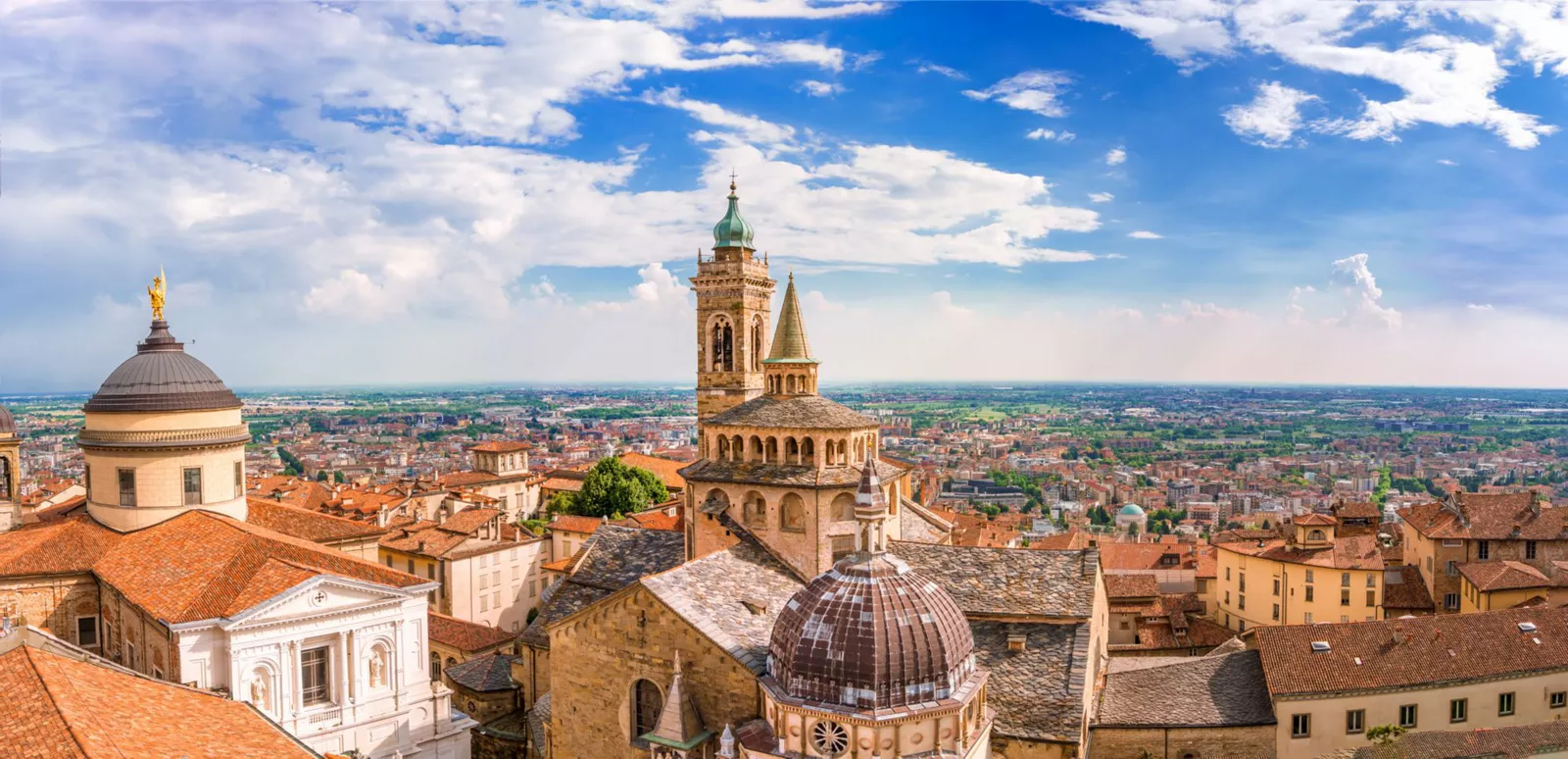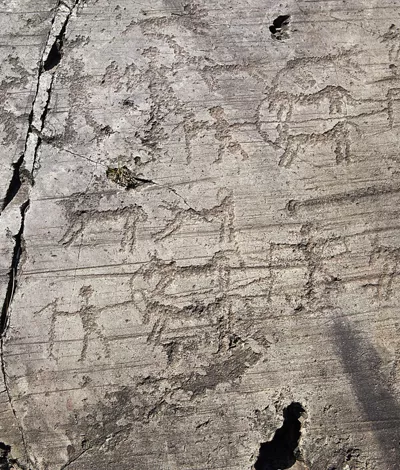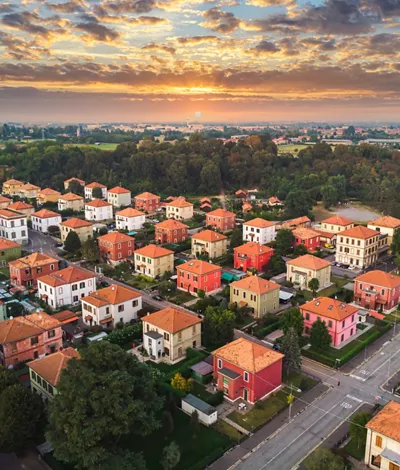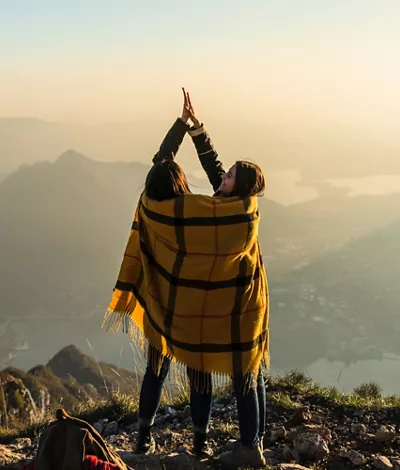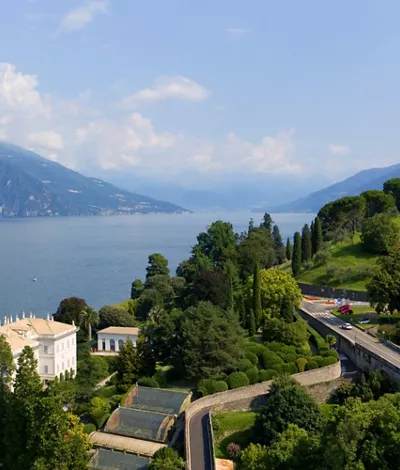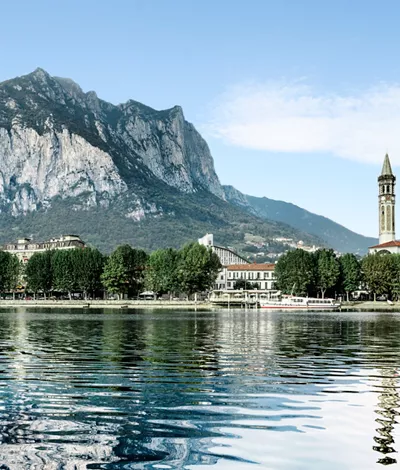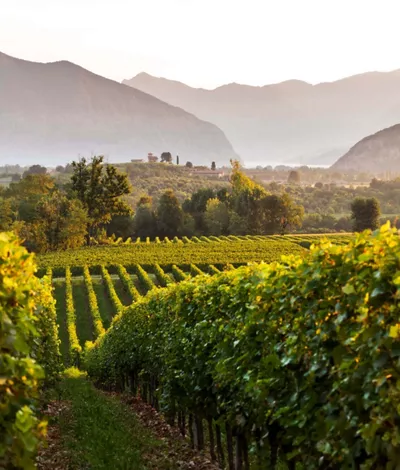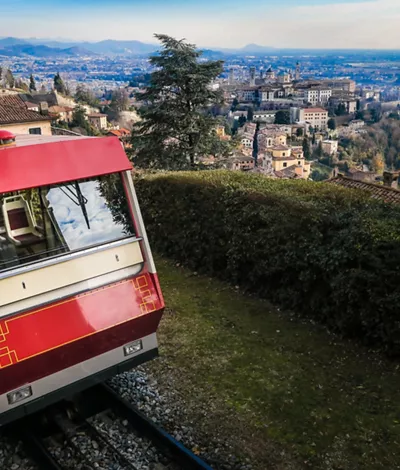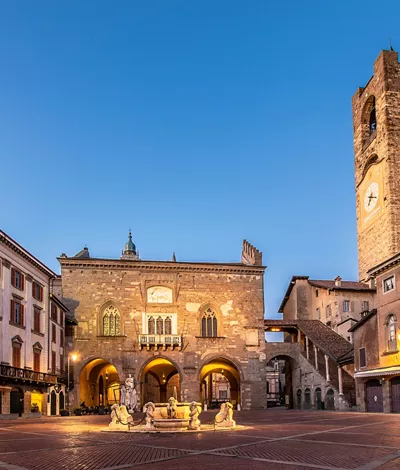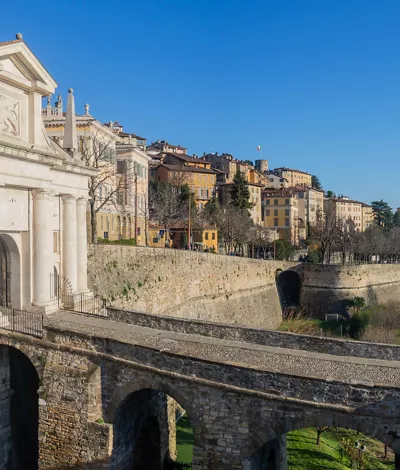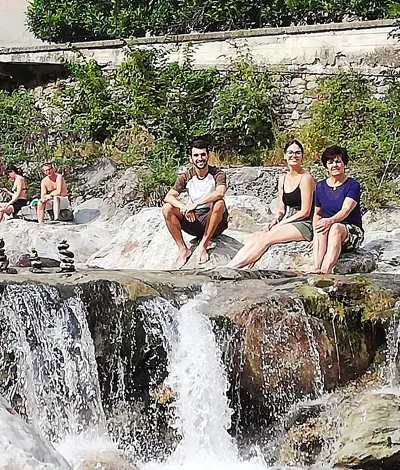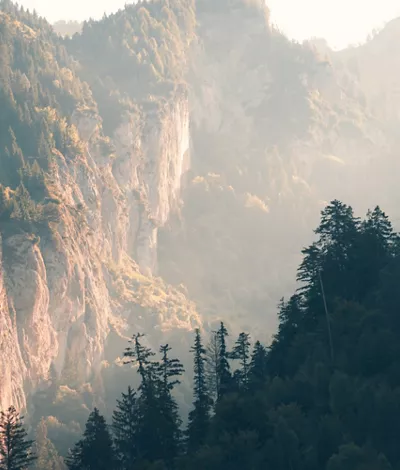A medieval heart and a contemporary soul, Bergamo is a jewel set within ancient World Heritage walls
Bergamo is one of a kind. It is characterised by an older part located on a hill, rich in medieval remains, and a modern part at its foot, born and raised with industrial expansion. Two souls and one heart. Ideal for a holiday of exploration, it promises a conquest at every step.
Bergamo, medieval heart, contemporary soul
Bergamo is a city of art, precious architecture and bastions, opera music and delicious traditional cuisine. The city centre, surrounded by historic villages, is an extraordinary opportunity for discovery, shopping and entertainment. Lose yourself in its festivals, concerts and shows. And you will fall madly in love with it.
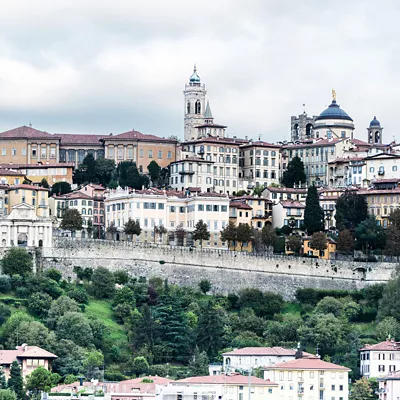
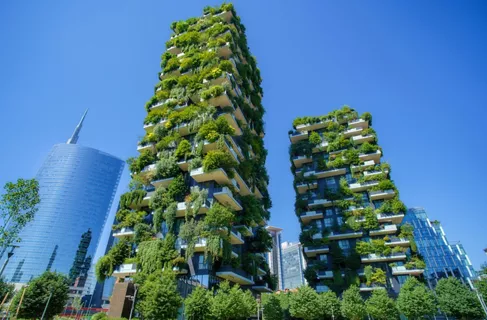
Milan
Milan, the metropolis that finds a perfect and dynamic balance between history and modernity. While it is considered one of the world's fashion and design capitals, as well as a financial hub, Milan is also a city of culture and thought. While always looking towards the future, this Lombard capital lovingly preserves its prominent history, boasting spectacular museums and some of the most monumental churches in Italy.
Discover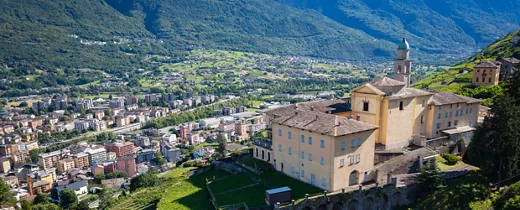
Sondrio
The capital of the Valtellina, Sondrio, stands out as the most important economic centre of the Valtellina, a corridor between the north and south of the Alps, and also a land of sanctuaries and fine wines. It lies at the mouth of the Malenco valley , which communicates with Switzerland and is very popular with tourists, both in summer and winter for snow sports. Over the course of time, many have contended for this border location, which is coveted and marked with many testimonies: the Austrians, for example, 'bequeathed' the central Piazza Garibaldi, next to the course of the Mallero stream. Strolling along, one encounters 19th-century palazzi, elegant in their neoclassical façades, and then those of the 16th century, the Martinengo and Pretorio palaces... The ecclesiastical heritage is instead in the collegiate church of Saints Gervasio and Protasio, while putting everything on the timeline is the Valtellina Museum of History and Art , which reconstructs the history and identity of the area up to the present day. The latest addition is Cast, a multimedia 'narrative museum' dedicated to Alpine culture, housed in Masegra Castle.
Discover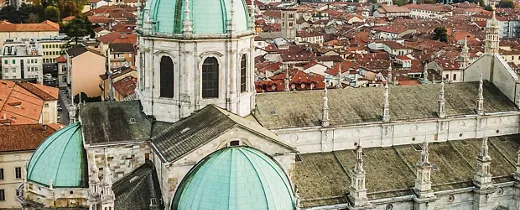
Como
Walking around the lake, among villages, historic villas and superb views The province of Como is industrious, but it is on the shores of its famous lake featuring picturesque views, charming villages, Art Nouveau-style architecture and enchanting gardens that over the years have captivated Hollywood and the countless actors who have made their home there. From Menaggio to Cernobbio, from Torno to Laglio via Bellagio and Tremezzo: every stop along the way is bursting with beauty and authenticity. Tourists looking for a cultural holiday among unmissable monuments, churches and museums can start in Como and spend a day exploring the city: the Cathedral, Villa Olmo, which often hosts exhibitions, not forgetting a trip to the Tempio Voltiano with its permanent exhibition dedicated to physicist Alessandro Volta. Then you can take a break for a few hours and take the cable car from the lakeside promenade to Brunate. Trekking enthusiasts can enjoy breath-taking views from the Sacro Monte di Ossuccio, one of the nine Sacri Monti hilltop complexes of Piedmont and Lombardy, listed as UNESCO World Heritage Sites. Another must is a trip to the Isola Comacina, a small oasis of peace surrounded by the waters of the lake and accessible by boat from March to October.
Discover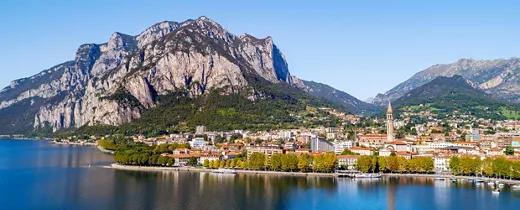
Lecco
The hidden jewel of Lake Como On the shores of that “branch of Lake Como” lies Lecco, one of Lombardy’s most picturesque locations. You can explore the city and its surrounding territory by following the footsteps of the characters in Alessandro Manzoni’s novel The Betrothed. Ponte Azzone Visconti offers the best views of Pescarenico, the oldest district of the city, which is described in the novel. Be sure to visit the Rocca di Vercurago castle, also known as Castello dell’Innominato, and Villa Manzoni, which belonged to the author’s family. The Basilica of San Nicolò, Palazzo Belgiojoso and Piazza Era are worth visiting. The lake shores offer enchanting villages, like Lierna, a popular tourist destination all year round thanks to its Riva Bianca beach and late-medieval castle. To discover a real-life ghost town, head to Consonno, the “Las Vegas of Brianza”. For visitors who love high-altitude hiking, around Lecco you can enjoy scenic treks to the peaks of Monte Resegone or the Grigne group. You can follow the Viandante hiking trail around the entire lake, from Lecco to Colico, finding beautiful villages along the way, including Mandello del Lario, Varenna and Bellano. Don’t miss the hill of Montevecchia, with its sanctuary immersed in the park and criss-crossed by paths you can travel on foot, by horse or by mountain bike.
Discover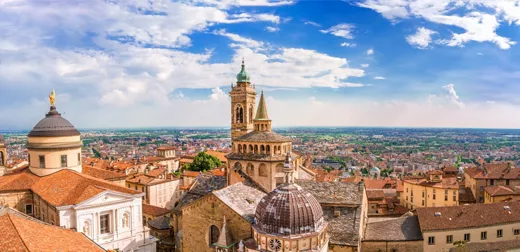
Bergamo
A medieval heart and a contemporary soul, Bergamo is a jewel set within ancient World Heritage walls Bergamo is one of a kind. It is characterised by an older part located on hills, rich in medieval remains, and a modern part at its foot, born and raised with industrial expansion. Two souls and one heart. Ideal for a holiday of exploration, it promises a conquest at every step.
Discover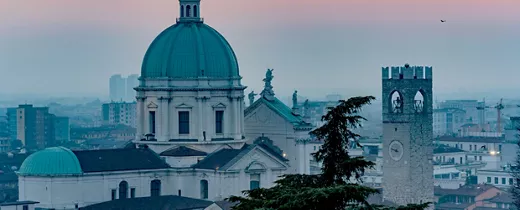
Brescia
From the lake to the mountains, among history, culture and natural paradises From mountains, lakes, forests and panoramic trains, to villages, castles and the refined wine cellars of Franciacorta: the province of Brescia, the largest province in Lombardy, boasts an extremely varied territory, which stretches from Bassa Bresciana to Val Camonica. Here, visitors can enjoy a rich variety of experiences. Do you love nature walks, water sports or cycling? Between Lake Garda and Lake Iseo, you will be spoilt for choice, with cycle paths suitable for all proficiency levels and the scenic “Treno dei Sapori” (Flavour Train), aboard which you can discover typical local products. History buffs can travel back in time to the Middle Ages by visiting Brescia Castle or discover the fascinating Camuni civilisation the Naquane National Park of Rock Engravings in Capo di Ponte. We also recommend visiting the Villa Romana in Desenzano del Garda and the historic town centre of Sirmione. If you are looking for family-friendly activities, don’t miss the Forest of Gnomes in Zone, where you will encounter gnomes, dragons and other magical creatures. Visitors who want to indulge in a little relaxation are sure to love the thermal baths of Boario and the healing water of Sirmione. Skiing enthusiasts can choose between the Pontedilegno-Tonale Ski Area and the Borno Ski Area, between Val Camonica and Valle di Scalve.
Discover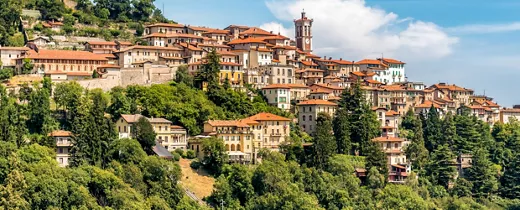
Varese
Strolling among lakes, noble residences and spiritual sites The province of Varese offers visitors a stunning array of artistic and natural beauties to explore — starting with its capital, a “garden city” set in a region rich in lakes set atop seven hills. You can visit the Palazzo Estense with its park, Villa Panza, Piazza del Podestà and the Basilica of San Vittore. Near the city are the 18th-century Villa Della Porta Bozzolo, the Valganna caves and the Sacro Monte di Varese, with its frescoed chapels and panoramic views over the valley. Overlooking Lake Maggiore is the hermitage of Santa Caterina del Sasso. Or another way to admire the lake from above is to visit the Rocca di Angera castle, which houses the Museo della Bambola, or to take the cable car to the summit of Sasso Ferro from Laveno Mombello, a delightful lakeside village. For an immersive experience in nature, you can take a dip in Lake Monate, cycle along the Comabbio lakeside path, or go trekking or mountain biking along the 150 km of trails in the Cinque Vette Park. Not far from Malpensa is Volandia, a museum dedicated to flight.
Discover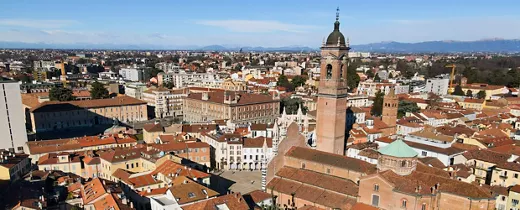
Monza
A city symbolising power and royalty in Lombardy Monza is undoubtedly one of the most renowned urban centres in Lombardy. Rich in history, its origins date back to the Iron Age. You will be enchanted by the beautiful black and white façade of Monza Cathedral, the 6th-century Basilica of St John the Baptist. Inside, you will find the Chapel of Queen Theodolinda, a masterpiece of Gothic art, which houses the Iron Crown, the most famous example of Lombard goldsmithing. An air of royalty permeates Monza. The Royal Villa, or Reggia di Monza, is a must-see. This huge, neoclassical building, the former residence of the Habsburgs, is surrounded by its enormous Park, one of the largest urban parks in Europe. Anyone with a passion for engines can visit the Monza Circuit, built in 1922 and still a go-to track for motorbike sports. Walking through the streets of the centre, you will come across the Arengario, an ancient, 13th-century municipal palace. As you continue along the Lambro river, you will discover the many bridges that cross it, starting with the most famous, the Ponte dei Leoni. You can treat yourself to a bite to eat at one of the typical trattorias. We recommend trying the risotto with Luganega, a sausage typical of Monza.
Discover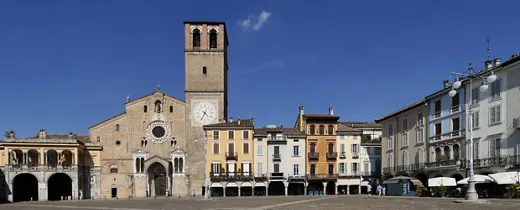
Lodi
History and tradition in the Po Valley Lodi is among the richest cities in history in the Po Valley. Founded in 1158 by Frederick Barbarossa, its origins are even older. As you walk through the streets of the historic centre, make sure to stop by monuments such as the Lodi Cathedral of Santa Maria Assunta, the Tempio dell’Incoronata and Palazzo Mozzanica, one of the best examples of Lombard Renaissance architecture. You can stop for a coffee or an aperitif at Piazza della Vittoria, with arcades on all four sides. Slightly further away from the city, you can visit Lodi Vecchio, the ancient Laus Pompeia, a city founded by the Romans that originated as an earlier village of Celtic origin. From Piazza Santa Maria, you can see the ruins of the ancient cathedral. If you love nature, we recommend visiting the Paradiso Fish Park to see fish in their natural habitat, thanks to the underwater observatory. As well as a thousand-year-old history, Lodi also has its own fantastic culinary tradition. The undisputed star is Granone Lodigiano cheese, considered the predecessor of all Grana cheeses, but Lodigiano salami and Raspadura cheese are also worth trying.
Discover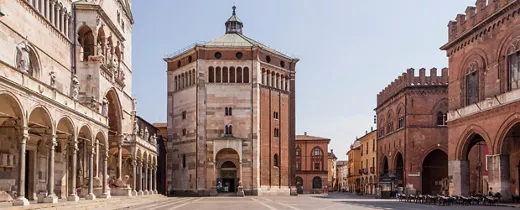
Cremona
The home of the violin, among thriving plains and protected green areas The province of Cremona boasts many protected green areas, including regional parks and nature reserves. However, visitors flock to the area not only for these natural paradises, such as the Oglio and Serio Regional Parks, but also for its elegant cities, like Cremona and Crema. Your first stop when visiting the provincial capital should undoubtedly be the Torrazzo bell tower, which stands beside Cremona Cathedral. At 112 metres high, it is among the tallest bell towers in Europe. You can visit this undisputed icon of the city by climbing no fewer than 502 steps, but the views you will enjoy from the top make it worth the effort. Cremona is also considered the home of violins — we recommend visiting the Violin Museum, a stone’s throw from the beautiful Piazza del Comune. The historic centre of Crema, within the Serio Park, is easily accessible by foot. Be sure not to miss the Sanctuary of Santa Maria della Croce, the former Convent of Sant’Agostino, which now houses the Civic Museum of Crema and the central Piazza del Duomo.
Discover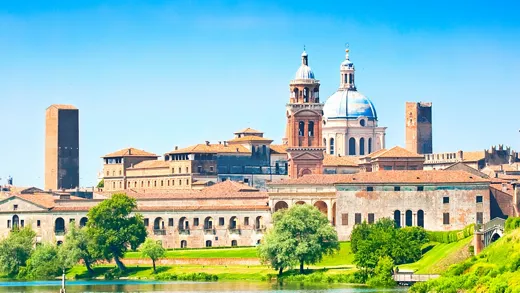
Mantua
One of Italy's major art cities, Mantua is surrounded by water and marked by a prestigious history. Mantova is a gem of Italian art and architecture which beautifies Lombardy as a region. Built around three lakes supplied by the Mincio river, it is the city of Virgil and the Gonzagas characterised by an overwhelming charm and aiming straight at the heart of the visitors who will never forget it.
Discover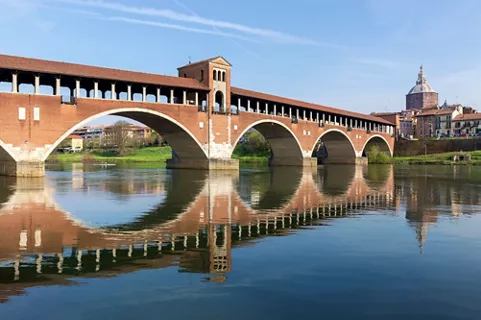
Pavia
Falling in love with Pavia: the rice capital of Italy and home to Einstein A rich historical and artistic heritage, an enviable food and wine tradition, and countless fascinating sites make Pavia surprisingly unique and perfect for a tailor-made holiday. The Charterhouse, a jewel of the Renaissance The best place to start is the Charterhouse of Pavia, a monumental complex eight kilometres away from the city centre. Commissioned as a family chapel and mausoleum by Gian Galeazzo Visconti in the 15th century, it was entrusted to the Carthusian monks, before passing to the Cistercians and the Benedictines of Pavia. But, though his ashes were taken there, its patron never saw the end of its construction, which was continued by Francesco Sforza and Ludovico il Moro. Housing works by Perugino, Pinturicchio and Guercino, the interior flaunts a Gothic style, modelled on the Milan Cathedral, while the façade is overtly Renaissance. The Visconti Castle, a symbol of power More than a castle, this building is a symbol of wealth and power dating back to 1360. It is surrounded by a beautiful park, which you can only see part of today, connecting it to the Charterhouse of Pavia. Significant historical events it bore witness to include the marriage of Ludovico il Moro to Beatrice d'Este. Although today part of the castle has been destroyed, the interior still hosts the Civic Museums and the Malaspina civic art gallery, with masterpieces such as Antonello da Messina's Portrait of a Man. The Church of San Pietro in Ciel d'Oro and the Ponte Coperto The Church of San Pietro in Ciel d'Oro is definitely worth a visit. It is the resting place of two Church Fathers: St Augustine, who lies in a magnificent tomb, and Severinus Boethius, philosopher and martyr. The Longobard-style church was rebuilt in the Romanesque style and is considered one of the most important religious building in the city together with the Basilica of San Michele Maggiore. Also well worth a visit is the Ponte Coperto, the iconic covered bridge of Pavia that crosses the Ticino river. This bridge connects the historic centre with Borgo Ticino, originally located outside the city walls, and the Palazzo Broletto, a 12th-century building with a striking porticoed inner courtyard, the heart of institutional life in times gone by. Keen eyes can also spot a plaque dedicated to the 50th anniversary of the death of Albert Einstein, who lived here for some time. Albert Einstein It’s true! Einstein's parents moved to Pavia in 1894, to Palazzo Cornazzani to be precise, the former home of Ugo Foscolo, and Albert himself also lived here for a while. The theatre that hosted Gassman and Fo The 18th-century Teatro Fraschini theatre is a true masterpiece that has seen renowned actors such as Vittorio Gassman and Dario Fo grace its stage. It has a typical horseshoe shape, with a series of box seats and an entirely painted wooden ceiling. Pavia and its passion for heels In nearby Vigevano is the International Footwear Museum, which exhibits all kinds of shoes from the historical to the super fashionable and even recent models. You can even find the historic slipper “la pianella di Beatrice d'Este” strutting side by side with the best of Manolo Blahnik! Rice: an icon Pavia has around 80 thousand hectares of paddy fields. We are talking about the largest area of rice cultivation in Italy, and you can enjoy a walk or cycle on paths alongside the paddies.
Discover
Continue living like an Italian
Subscribe to the Newsletter so as not to miss places, events and experiences for experiencing the best side of Italy: the authentic one.

Keep up to date
Would you like to learn about the most authentic experiences to be had in Italy, stay up to date on the most interesting events, discover our special offers and receive lots of insider hints and tips?


